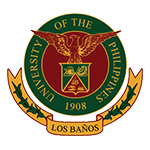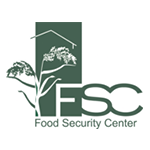 Urban agriculture is able to cater to food demand for the urban population, if it is practised in a proper way. FILE PIC
Urban agriculture is able to cater to food demand for the urban population, if it is practised in a proper way. FILE PIC
AS world population increases, with urbanisation moving in tandem, more people are expected to live in the cities. By 2025, it is estimated that 60 to 85 per cent of the world’s population will be considered as city dwellers.
In Malaysia, it is predicted that the urban population will increase to 75 per cent in three years.
Rapid urbanisation is pulling poverty and food insecurity into cities, given the fact that urban dwellers are actually net food buyers and depend largely on cash income to access food.
In fact, the urban poor are vulnerable to food price shocks and always suffer most from higher food prices, which eventually could lead to food insecurity since food composes a substantial part of urban household expenditure.
Food production has always been associated with rural environment.
In fact, to feed the urban population, it is assumed that relying on rural food production would be sufficient. However, this turned out to be rather inaccurate — urban agriculture itself is able to cater to food demand for urban population, given that it is practised in a proper way.
Urban agriculture is defined by the UN Food and Agriculture Organisation (FAO) as any agricultural activity which grows, raises, processes and distributes agricultural produce, regardless of land size and number of human resources within the cities and towns.
Studies from both developed and developing economies claimed that urban agricultural activities can contribute to the availability of fresh and nutritious food items, reduction in food expenditure and having direct access to varieties of food products.
Studies in 15 countries show that urban agricultural activities are closely related to food security, dietary diversity and nutritionally adequate diet.
Furthermore, urban agriculture also plays an important role to the climate change problem. It can green the city and improve the urban climate, while encouraging the reuse of urban organic waste and reducing the urban energy footprint.
Having recognised the importance of urban agriculture, the Malaysian government gave its full support towards this activity. This can be seen from the formation of the urban agriculture division under the Department of Agriculture Malaysia in 2010 to promote, among others, agricultural activities in the city to reduce the cost of living of the urban community.
Universiti Putra Malaysia (UPM) has designed and developed several affordable vertical farming methods, which can be adopted by the urban poor.
The technology is suitable for flat dwellers with limited and unsuitable growing space.
Vertical farming is the practice of producing food and medicine in vertically stacked layers, inclined surfaces or integrated in other structures, such as in a skyscraper, used warehouse or shipping container.
The modern idea of vertical farming use indoor farming techniques and controlled-environment agriculture (CEA) technology, where all environmental factors can be controlled.
These facilities utilise artificial control of light, environmental control (humidity, temperature, gases) and fertigation.
Some vertical farms use techniques similar to greenhouses, where natural sunlight can be augmented with artificial lighting and metal reflectors.
Since urban agriculture has the potential to gain momentum in Malaysia, it is therefore essential that appropriate strategies be put in place to ensure availability and affordability of safe and healthy foods.
There is also a need to promoting the production of such foods in urban areas, thus enhancing the livelihoods of actors, along the food value chain.
The contribution of urban agriculture to food availability and healthy nutrition for the urban population is an important asset, in addition to providing a source of income and livelihood for its participants.
Moving forward, policymakers should consider a number of approaches to make this activity socially and economically viable.
Among others, introducing technology and technology know-how to grow vegetables in flats and apartments, and identifying land for farming by urban dwellers.
This can be done by local government agencies, where they can identify vacant lots and make this information publicly available and authorising contracts with private landowners.









